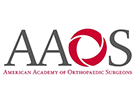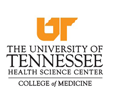Aerobic exercise found to be most effective for knee osteoarthritis
For patients with knee osteoarthritis, aerobic activities such as walking, cycling, or swimming are likely to be the best exercise for improving pain, function, gait performance, and quality of life, finds a study published by The BMJ today.
Hip Weakness May Contribute to Knee Pain
If you have knee pain or other knee problems, your physical therapist may pay close attention to your hips and the strength of your hip muscles. Why? Because your hip muscles, like the gluteus medius, control the position of your knees when you are walking, running, or jumping.
The Missing Revision Burden
Rising volumes of primary hip and knee replacements, coupled with longer lifespans, have led to projections of revision surgeries becoming a significant cost and healthcare burden. However, techniques and technology have improved. The purpose of this study was to determine whether revision hip and knee arthroplasty incidence has risen as previously predicted in the United States.
Successful management of PJI occurred in about 50% of patients
Results presented at the Musculoskeletal Infection Society Annual Meeting showed successful management of periprosthetic joint infection occurred in a little more than half of cases after total joint arthroplasty.
Short to mid-term outcomes of hip arthroscopy for femoroacetabular impingement and labral tears in patients with diabetes
The purpose of this study is to report outcomes of patients with Diabetes Mellitus (DM) who underwent hip arthroscopy for femoroacetabular impingement (FAI) at short- to mid-term timepoints comparing these results to a control group of non-DM patients.
-
Dickson
-
ONEC1TY - Nashville






